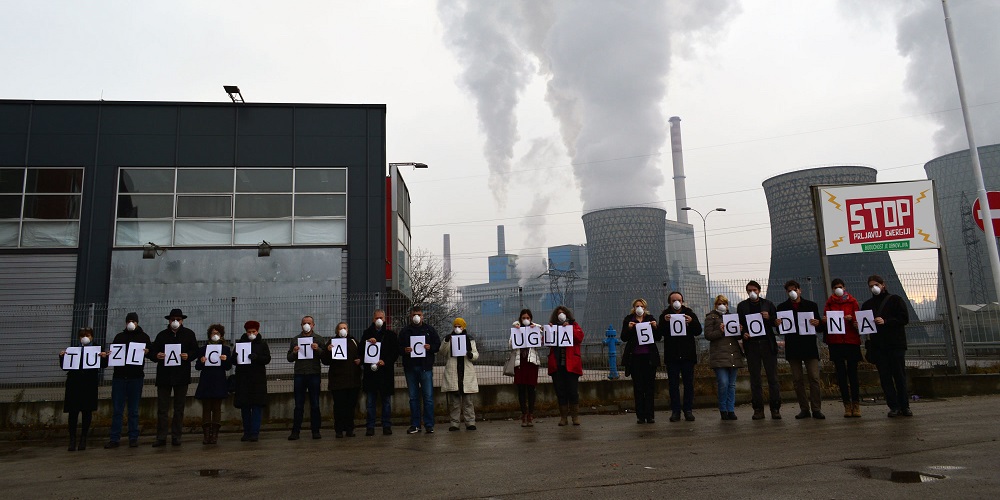Lifting the smog

Photo: Center from Ecology and Energy’s archive
Study | 25 June 2019
How much Tuzla’s public health would benefit from enforcement of air quality legislation
CEE Bankwatch Network and the Center for Ecology and Energy have therefore undertaken independent monitoring in Tuzla of coarse dust particles known as PM10. Together with the Health and Environment Alliance (HEAL), we have also calculated the health impacts of fine PM2.5 dust particles in Tuzla, based on official data, and PM10 calculated from official PM2.5 data using WHO conversion factors.
The independent monitoring shows that in 2018 – for a period of 144 days or almost 5 months spanning summer, autumn and winter – average PM10 levels were double the legal annual average limit. The average PM10 values were 78.9 µg/m3, while the annual average limit is 40 µg/m3.
On 98 days out of 144, PM10 exceeded the legal daily limit value of 50 µg/m3. Legally, only a maximum of 35 days per year is allowed. In other words, air pollution in Tuzla exceeded daily legal limits for three out of five months. The study estimates that PM2.5 pollution caused 136 premature deaths in adults in Tuzla in 2018. This represents 17 per cent of all deaths of adults above 30 years of age. If pollution levels stayed within legal limits, air pollution would still be responsible for 63 deaths in Tuzla’s adult population, whereas adhering to WHO recommendations would avoid all of these deaths. Legal compliance is therefore a minimum requirement and by no means the end goal.
PM10 also resulted in 1 339 new cases of bronchitis in adults in Tuzla in 2018 – almost one third of all incidences of bronchitis that year.
Location: Bosnia and Herzegovina
Project: Coal in the Balkans | Tuzla 7 lignite power plant, Bosnia and Herzegovina
Tags: air pollution | health
Never miss an update
We expose the risks of international public finance and bring critical updates from the ground. We believe that the billions of public money should work for people and the environment.
STAY INFORMED
